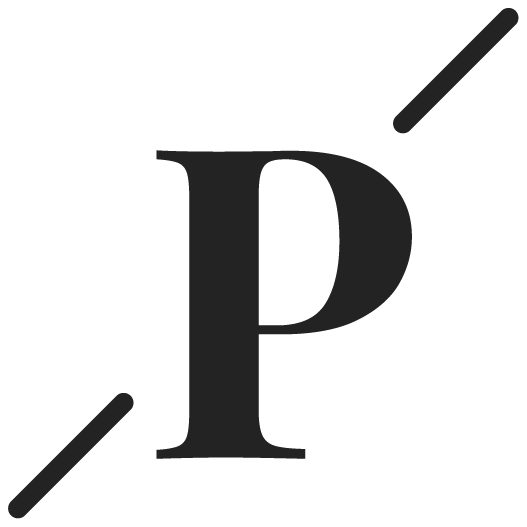This was, a grand European adventure and the tour through Côtes de Provence, France, wineries was without a doubt one of my highlights. As someone who best learns through experiences winery visits are a must for every trip. You can learn a lot about a region through wine because much of the world’s history is intertwined with it.
Provence sprawls the Mediterranean coast of France, neighbouring the Rhone River and Côte d’Azur. If we zoom out further the main thing to know is that this region edges on the South of France. With this in mind, it is no surprise that the most popular wine produced in this region is Rosé (88%), mostly dry and aromatic.
With 2,600 years of winemaking history, Provence is the oldest wine-producing region in France*. Geographically speaking, the region is quite small but the rich variety of climate, soils, altitude, and history makes it ideal for growing a wide range of grape varietals. This very same climate also makes the South of France an ideal summer vacation destination for many Europeans who close up shops to relax on the beach and drink wine in the shade of blooming trees.
But today, we are here for the wine so let’s get into it. If you are not too interested in learning about the viniculture of it all skip to the Tours & Tastings section.
This article might contain affiliate links. Read the disclaimer about affiliate links & PR gifting here.

Côtes de Provence sub-Region
Côtes de Provence is the largest AOC in the region churning out 75% of Provence wine. 92% of wine produced is rosé ultimately making Provence France a rosé wine region. From end to end even across this geography wine production varies with the weather and climate and so naturally, this area is also broken down into four sub-regions: Sainte-Victoire, La Londe, Fréjus, and Pierrefeu. The vineyards take up 20,200 hectares of land, 28% of which is organic of HVE✳.
✳HVE: stands for High Environmental Value, a French agricultural certification that recognizes commitment to protecting and enriching the environment through agricultural operations.
Côtes de Provence Varietals
Primary geology here is calcareous and crystalline with limestones and crystalline ridging the hills and mountains facing the sea. A typical Côtes de Provence rosé is dry, light in colour, and has a fresh flowery aroma with a mix of red and yellow fruits, and some hints of citrus and tropical fruit. The red wines, though produced sparsely, are easy to drink, have a “good tannin density,” fresh fruit profiles, and have great ageing potential. White wines, on the other hand, are fresh and clean, ideal for a sunny patio gathering.
Red & Rosé Grapes
Cinsault: fresh and delicate with a fruity touch, boosts other varietals in the blend.
Grenache: full-body wine with berry and spice flavours, and meaty notes.
Mourvèdre: robust wines with assertive tannins, hints of violet and blackberry, smooth with notes of spice.
Syrah: rich in tannins, hints of vanilla, and candied red fruits.
Tibouren: authentically a Provence grape and can only be found here; delegate and elegant wines, rich bouquet, mostly used for rosé.
Lesser found red/rose varietals: Carignan, Counoise, Tannat, Cabernet Sauvignon, Braquet, Calitour, Folle Noir, and Barbaroux.

White Grapes
Clairette: southern grape, aromatic, notes of white fruits, fennel, and lime blossom.
Rolle (Vermentino): adds fineness into a blend, notes of citrus, pear, almond, and fennel.
Sémillon: often used to add viscosity to a blend, notes of hazelnut, honey, apricot, and white flowers.
Ugni Blanc (Trebbiano): juicy and fruity grape, quite delicate, adds freshness to a blend.
Lesser found white varietals: Bourboulenc, Clairette, Marsanne, Roussanne, Pascal, Terret Blanc, Spagnol (Mayorquin), and Pignerol.


Wine Tours & Tastings in Côtes de Provence
This adventure was impromptu but knowing that many European wine regions will only open doors by reservation I frantically Googled the night before. In a nutshell, many of the wineries are open for tasting and visitation without an appointment if you are willing to go for a drive. Tours of the facilities are by reservation only but many of them have beautiful open properties with sitting areas where you can relax with a glass of wine. If in doubt, search Google reviews for the word “tasting”. Note that a lot of businesses in this part of the world close for lunch, this could be any time between 12 pm and 2 pm.
We stayed at the Hôtel Escapade in Le Pradet, a small community near the beach, and this drive was absolutely magical. Moving away from the shores into the vineyards we saw wide open fields, almost desert-like sun-kissed lands that felt like an entirely new place.
If you are not interested in driving, here are some organized tour options:
Cotes de Provence Wine Tour from Aix-en-Provence
Half-day tour from, visit 2 wineries.

Wineries to visit
There are quite a few wineries spread across the region. Not all of them offer tastings or are for visitors and that information might be hard to find. Always check the winery’s website in case the opening hours have changed.
Château des Bormettes
A centuries-old family winery with a vast vineyard and a cellar dating back to the 17th century. This tasting was exceptionally fun and insightful. The tasting room is open Monday to Friday from 10 am to 12 pm and from 2 pm to 6 pm.
Wines to try: try the rose, try the white but this is the place to dig into the reds. Their Syrahs are quite delicious and plot selection bottles are very unique to the terroir.
Website | Instagram | Google Map


Château le Bastidon
Family-owned production growing wines and olive trees. The first thing that will catch your attention is their enclosed yard with garden furniture and flowering plants. And then there is of course the wine. The tasting room is open throughout the week with mixed hours but is always closed from 12 pm to 2 pm.
Wines to try: The winery is famous for the roses but whites are also lovely. I particularly enjoyed the Le Bastion lineup of single varietals and blended roses. Pink Seduction Rose Vintage is also a must-try.
Website | Instagram | Google Map




Domaine De Saint Andre de Figueres
Stunning, family-owned winery focusing on organic viticulture. The tasting room shares space with the shop and is open Tuesday to Saturday from 10 am to 1 pm and from 2 pm to 6 pm. Figueres also has a restaurant on the premises showcasing local and seasonal ingredients; reservations are recommended.
Wines to try: while they do produce rose, white, and red wines Figueres specializes in rose and has plenty of it available for tasting and purchase. The Première vintages collection was all quite enjoyable, I brought one home.
Website | Instagram | Google Map



* Source: Wine Folly
























We will be in this region next spring. Great information and I am saving for my planning.
I’d love to visit Domaine De Saint Andre de Figueres–family vineyards focused on organic practices sounds ideal.
That is one thing we didn’t get to do on our short trip to France. I’m going to pin this, so I can refer to it when we finally get to go wine tasting in France!
It has been years since I visited the South of France. I would absolutely love to do a multi-day winery tour. Great pics.
These all look so lovely to visit! I love the beautiful photos and all of the helpful tips too, thank you!
What a quintessential experience – thanks for sharing this useful guide!